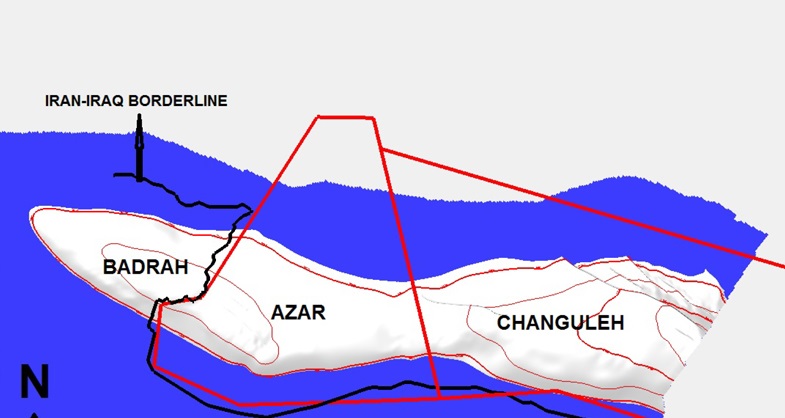Shared oil fields have limited lifecycle. Ever since taking office first in 2013, the administration of President Hassan Rouhani has concentrated on the development of jointly owned oil fields in an attempt to increase the share of such fields in national oil production.
Economic plans pursued by the Rouhani administration require the government to bring national crude oil production capacity to over 5.7 mb/d in four years. Therefore, objectives of development of national petroleum industry with the focus on jointly owned fields herald a tough road ahead for the oil industry. Recently, in a bid to accelerate the development of shared fields, Iran's Minister of Petroleum Bijan Zangeneh ordered the transfer of drilling rigs from independent oil fields to shared ones. That is a sign of materialization of objectives of petroleum industry.
Changuleh is an oil field shared by Iran and Iraq. Foreign companies have constantly expressed interest in the development of this untapped oil field in western Iran. Three big Russian companies and one Croatian company have now submitted their proposals for the development of Changuleh, which was introduced at a Tehran conference for investment under the newly-developed Iran Petroleum Contract (IPC) model.
$2.2bn Investment
The initial investment needed for the development of Changuleh oil field is estimated at $2.2 billion. Such activities as 3D seismic testing, location of wells and infrastructure work like clearing and construction of access routes have been carried out so that development of Changuleh would start as soon as a qualified investor has been chosen.
According to studies conducted so far, at least 19 wells need to be drilled to allow for recovery from this field whose development has been defined in two phases; Phase 1 is early production targeting 15,000 b/d output, while Phase 2 targets 50,000 b/d output.
Changuleh used to be recognized as an independent oil field; however, 3D seismic testing conducted later proved that Changuleh was jointly owned. An official letter from the Exploration Directorate of the National Iranian Oil Company (NIOC) recognized Changuleh as a shared oil field.
Two-Phase Development
The latest studies show that Changuleh would be developed in two phases. The first phase, which is forecast to last 40 months, requires the drilling of four wells and workover of two existing exploration wells for an output of 15,000 b/d. Meantime, a 100-kilometer oil pipeline besides gas and oil separation facilities would be built.
The second phase, which is forecast to last 60 months, requires the drilling of 13 new wells and construction of infrastructure installations along with the production unit and laying pipelines. That would raise the Changuleh output to 40,000 to 50,000 b/d.
Iran's Changuleh and Iraq's Badra oil field form a single petroleum play. Changuleh is located close to Azar oil field in the Anaran oil block which was discovered in 2005 jointly by Norway's Statoil Hydro and Russia's Lukoil. Located 20 kilometers southeast of the city of Mehran in Ilam Province, Changuleh is estimated to hold between 400 million and 650 million barrels of crude oil.
3.4bn Barrels Oil in Place
Located in the southwestern part of Ilam Province between the cities of Mehran and Dehloran, Changuleh lies near the Zagros Mountains. Changuleh's Bangestan Formation is the second important oil field in the province.
Changuleh is estimated to hold 3.4 billion barrels of oil in place with an API gravity of 22. Two new wells are to be spudded in this field, while two existing wells would be worked over to allow for early production from this field. On the ground, first-phase separator, transmission pumps, diesel generator power supply, evaporation pool, flare, stream pipelines and wellhead installations are on the agenda.
In order to carry oil from Changuleh to Dehloran, a 130-km pipeline 8 inches in diameter is envisaged.
A report drawn up by the Petroleum Engineering and Development Company (PEDEC), early development of Changuleh oil field and assessment of the hydrocarbon potential of this field would allow the full development of the reservoir for a target output of 65,000 b/d of crude oil.
Courtesy of Iran Petroleum


Your Comment